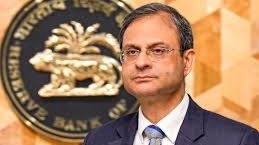Sanjay Malhotra, Governor, Reserve Bank of India
RBI has lowered the GDP growth forecast to 6.5 per cent from earlier projection of 6.7 per cent due to global uncertainties.
The RBI lowered the inflation projection for the current fiscal to 4 per cent from 4.2 per cent earlier, taking into account good agricultural output and falling crude prices.
The Monetary Policy Committee (MPC), which consists of three RBI and three external members, cut the repo rate by 25 basis points to 6.00%. It started reducing rates with a quarter-point reduction in February, its first cut since May 2020
MUMBAI: The Reserve Bank of India (RBI) cut its key repo rate on Wednesday for a second consecutive time and changed its monetary policy stance to “accommodative” from “neutral” to boost the sluggish economy, which is facing further pressure from U.S. tariffs.
Following the rate cut, the key policy rate eased to 6 per cent providing relief to home, auto and corporate loan borrowers.
RBI has lowered the GDP growth forecast to 6.5 per cent from earlier projection of 6.7 per cent due to global uncertainties.
In its last policy in February, RBI had trimmed repo rate by 25 basis points to 6.25 per cent. This rate came after previous rate reduction in May 2020. The last revision of rates happened in February 2023 when the policy rate was hiked by 25 basis points to 6.5 per cent.
As expected, the Monetary Policy Committee (MPC), which consists of three RBI and three external members, cut the repo rate by 25 basis points to six per cent. It started reducing rates with a quarter-point reduction in February, its first cut since May 2020.
All six MPC members voted to cut the repo rate.
Tariff measures announced by the U.S. have exacerbated uncertainties, said RBI Governor Sanjay Malhotra.
“In India, growth is improving but remains lower than what we aspire for, Malhotra said, adding that the inflation outlook is benign.”
The change in the policy stance means the MPC is considering only two options, either a status quo or a rate cut, and the stance does not directly link to liquidity conditions, he said.
The RBI lowered the inflation projection for the current fiscal to 4 per cent from 4.2 per cent earlier, taking into account good agricultural output and falling crude prices.
Consumer Price Index (CPI) based headline retail inflation declined by a cumulative 1.6 percentage points during January-February 2025, from 5.2 per cent in December 2024 to a low of 3.6 per cent in February 2025.
On the back of a strong seasonal correction in vegetable prices this year, food inflation dropped to a 21-month low of 3.8 per cent in February.
The domestic growth-inflation trajectory demands monetary policy to be growth supportive, while being watchful on the inflation front.
“We are aiming for a non-inflationary growth that is built on the foundations of an improved demand and supply response and sustained macroeconomic balance. As before, we shall remain agile and decisive in our response and put in place policies that are clear, consistent, credible and in the best interest of the economy,” said Malhotra.
India’s benchmark 10-year bond yield was marginally lower at 6.50 per cent after the announcement, against 6.51 per cent before the announcement, while the rupee was a tad down at 86.61 from 86.58 pre-policy. The benchmark equity indexes were down around 0.3 per cent each.
The new U.S. tariffs on India threaten the central bank’s GDP growth estimate of 6.7 per cent for 2025-26 and the government’s economic survey forecast of 6.3 per cent -6.8 per cent.
Inflation, on the other hand, dropped to 3.6% in February, below the central bank’s target of 4 per cent, and is seen holding around those levels, giving policymakers more manoeuvring room.
CII Director General Chandrajit Banerjee termed the decision to continue with the rate easing cycle as timely and prudent.
“The rate cut coupled with the shift in monetary policy stance from ‘neutral’ to ‘accommodative’, too, is a big positive,” Banerjee said.
Automotive sector will benefit from the positive impact of the Reserve Bank of India cutting key interest rate by 25 basis points as it will decrease financing costs and create positive sentiments in the market, Society of Indian Automobile Manufacturers said.
Sachin Bajaj, Executive Vice President & Chief Investment Officer, Axis Max Life Insurance, said, “The policy announcements come against the backdrop of increased volatility across asset classes, fear of a sharp global slowdown due to tariff shock. We believe the policy announcements were balanced and prudent, especially given the current uncertainties. The change in stance highlights the MPC’s resolve to support growth, as inflation risks have come down while risks to growth have increased.
On the liquidity front, it is expected the RBI to remain proactive and ensure sufficient liquidity conditions in the banking system.
Niraj Kumar, Chief Investment Officer, Future Generali India Life Insurance, commented,“ While the extent of trade war impact is yet ambiguous, monetary policy is rightly taking on the baton of pump priming the economy & doing the heavy lifting in India. Overall, a dovish policy, amid the looming uncertainty around global growth. The change in policy rate will also help insurance companies to be more competitive in their offerings and capitalize on the opportunities in an ever-expanding financial space.”

